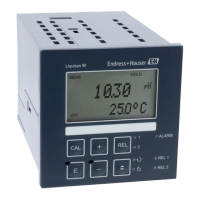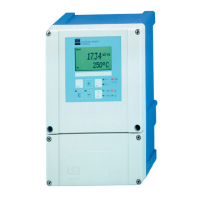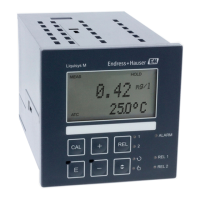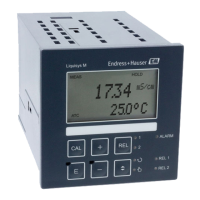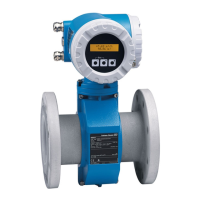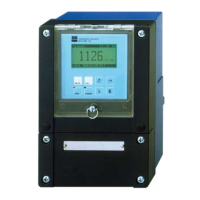Liquisys M CPM223/253 Commissioning
Endress+Hauser 59
Actuating signal outputs (R237 to R2310)
Each control contact outputs a cyclical signal whose intensity corresponds to the controller's
manipulated variable. A distinction is made according to the type of signal cycle:
• Pulse length modulation
The bigger the calculated manipulated variable is, the longer the contact affected remains
picked up. The period T can be adjusted between 0.5 and 99 s (field R238). Outputs with
pulse length modulation are used to activate solenoid valves.
• Pulse frequency modulation
The bigger the calculated manipulated variable is, the higher the switching frequency of
the contact affected. The maximum switching frequency 1/T can be set between 60 and
180 min
-1
. The on-time t
ON
is constant. It depends on the set maximum frequency and is
approx. 0.5 s for 60 min
-1
and approx. 170 ms for 180 min
-1
. Outputs with pulse frequency
modulation are used to activate directly controlled solenoid dosing pumps.
Constant controller
Via the current output 2, the minimum actuating variable (0 %) of the controller is output
with 0/4 mA and the maximum actuating variable (100%) of the controller is output with
20 mA.
Control characteristic for direct and inverse control action
You can choose between two control characteristics in the R236 field:
• Direct control action = maximum function
• Inverse control action = minimum function
a0008941
Fig. 41: Control characteristic of a proportional controller with direct and inverse control action
ADirect = max. function
B Inverse = min. function
a0008928
Fig. 40: Signal of a pulse-length modulated controller contact (left) and of a pulse-frequency modulated controller contact (right)
A
B
Contact 1 = on, 0 = off
Time [s] t
1
= t
on
t
2
= t
off
T
T
1
T
2
Period length
Impulse period length (impulse freq. 1/T
1
and 1/
T
2
)
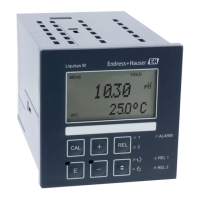
